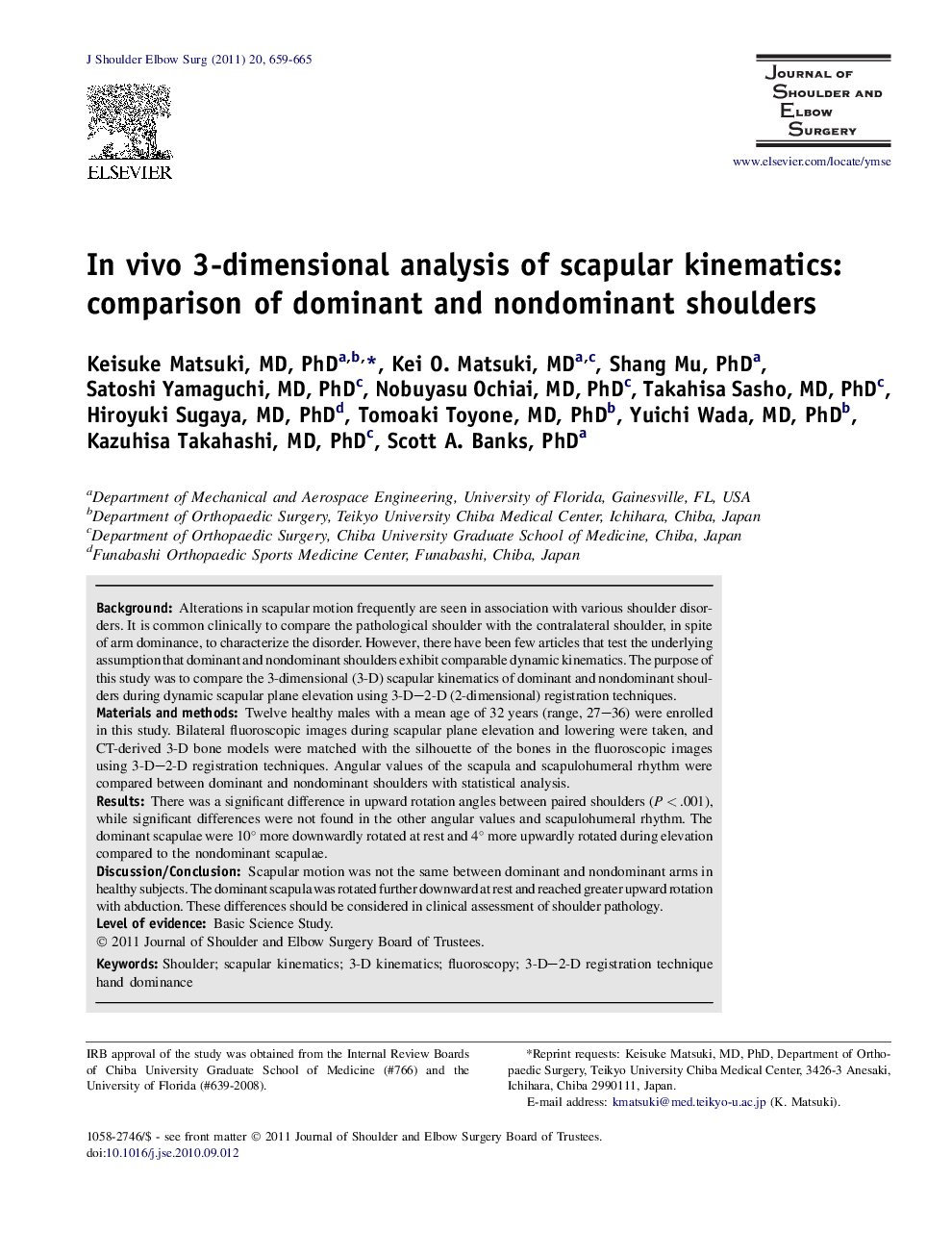| کد مقاله | کد نشریه | سال انتشار | مقاله انگلیسی | نسخه تمام متن |
|---|---|---|---|---|
| 4074542 | 1267013 | 2011 | 7 صفحه PDF | دانلود رایگان |

BackgroundAlterations in scapular motion frequently are seen in association with various shoulder disorders. It is common clinically to compare the pathological shoulder with the contralateral shoulder, in spite of arm dominance, to characterize the disorder. However, there have been few articles that test the underlying assumption that dominant and nondominant shoulders exhibit comparable dynamic kinematics. The purpose of this study was to compare the 3-dimensional (3-D) scapular kinematics of dominant and nondominant shoulders during dynamic scapular plane elevation using 3-D–2-D (2-dimensional) registration techniques.Materials and methodsTwelve healthy males with a mean age of 32 years (range, 27–36) were enrolled in this study. Bilateral fluoroscopic images during scapular plane elevation and lowering were taken, and CT-derived 3-D bone models were matched with the silhouette of the bones in the fluoroscopic images using 3-D–2-D registration techniques. Angular values of the scapula and scapulohumeral rhythm were compared between dominant and nondominant shoulders with statistical analysis.ResultsThere was a significant difference in upward rotation angles between paired shoulders (P < .001), while significant differences were not found in the other angular values and scapulohumeral rhythm. The dominant scapulae were 10° more downwardly rotated at rest and 4° more upwardly rotated during elevation compared to the nondominant scapulae.Discussion/ConclusionScapular motion was not the same between dominant and nondominant arms in healthy subjects. The dominant scapula was rotated further downward at rest and reached greater upward rotation with abduction. These differences should be considered in clinical assessment of shoulder pathology.
Journal: Journal of Shoulder and Elbow Surgery - Volume 20, Issue 4, June 2011, Pages 659–665